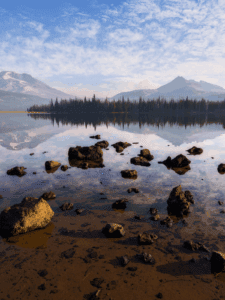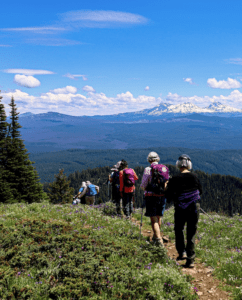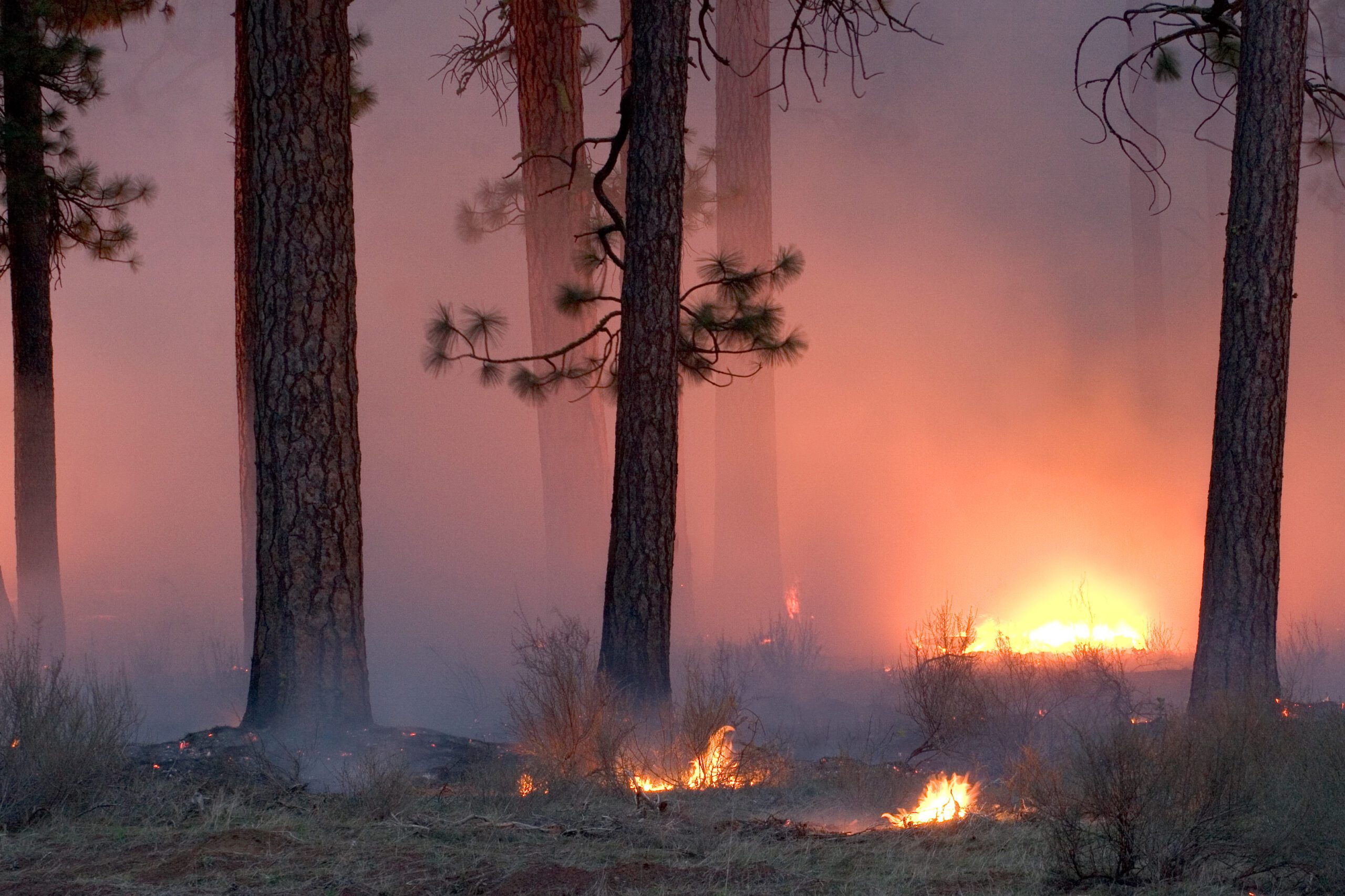Forest fires can be a threat to homes, property, and human life, but they also play a vital role in restoring and maintaining a healthy forest. While the topic of wildland fire is complex, we’ve worked to distill the information into ten things every Oregonian should know about wildland fires.
Wildfire: Threat and Necessity
Wildland fires can endanger homes and lives, but it’s also essential for healthy forests. Fire clears undergrowth, recycles nutrients, creates habitat like standing dead trees (snags), and supports biodiversity. Forests east and west of the Cascades evolved with fire, and many plants and animals depend on it. However, unnaturally intense fires—especially near communities—are a growing concern.
Forests Were Once More Resilient
Many Indigenous peoples used fire to shape diverse, resilient forests full of big trees and complex habitats. These forests were better able to withstand fire, drought, and other disturbances. In contrast, modern industrial logging and fire suppression have led to dense, uniform tree plantations that are more flammable and less resilient.
Logging Increases Fire Risk
Research shows corporate tree plantations burn more severely than nearby public forests. Logging often removes fire-resistant old trees, replaces them with dense young ones, and suppresses beneficial fire. Aggressive thinning can dry out forests, making them more flammable. Add climate change and development, and the result is larger, more destructive fires.
Climate Change is a Major Driver
Hotter, drier summers, less snow, and extreme wind events are increasing fire risk. Protecting mature and old-growth forests is one of the best ways to combat both climate change and fire risk. These forests store carbon, resist burning, and help regulate the climate. By contrast, logging releases carbon and creates flammable conditions.
Fire Releases Less Carbon Than Logging
Despite the smoke, wildfire emits far less carbon than logging. Fires often burn patchily, and dead trees continue storing carbon for decades. Logging, on the other hand, strips carbon-storing trees from the land, depletes soil, and relies heavily on fossil fuels.
Restoration Can Help—But Only If Done Right
Some dry forests benefit from careful thinning of small trees and managed fire to restore old-growth conditions. But too often, these practices are misused to justify commercial logging that removes large trees and harms ecosystems. True restoration focuses on small-diameter trees, improving habitat, and supporting natural disturbance.
Protect Homes, Not Just Trees
Thinning remote forests doesn’t protect homes. Fireproofing homes—by clearing vegetation near buildings, using fire-resistant materials, and maintaining defensible space—is far more effective and cost-efficient. Yet agencies often spend more on backcountry logging than on proven strategies near communities.
Salvage Logging Harms Recovery
After fires, the logging industry and their allies push for “salvage logging”—clearcutting both live and dead trees. This destroys recovering habitat, damages soil, releases more carbon, and pollutes waterways. Studies show that letting forests recover naturally is the best way to support long-term health.
Not All Solutions Fit All Places
Oregon’s forests are diverse, and so are their relationships with fire. One-size-fits-all policies like widespread thinning, aggressive suppression, or mass prescribed burning can backfire. Instead, we should tailor approaches to each landscape and focus on where we can have the most impact—near homes and vulnerable communities.
The Logging Industry Exploits Fear
Sensational media and industry talking points exaggerate wildfire damage to justify more logging. In reality, fire often renews forests. We should report on fire with honesty and context—not fear and hysteria.
Nature Offers the Best Solutions
Agencies often treat fire, insects, and drought as problems to be controlled. But these natural processes are essential for healthy forests. They create diversity, structure, and the very conditions that make our forests so awe-inspiring. Forest management should respect this complexity—not try to override it.




